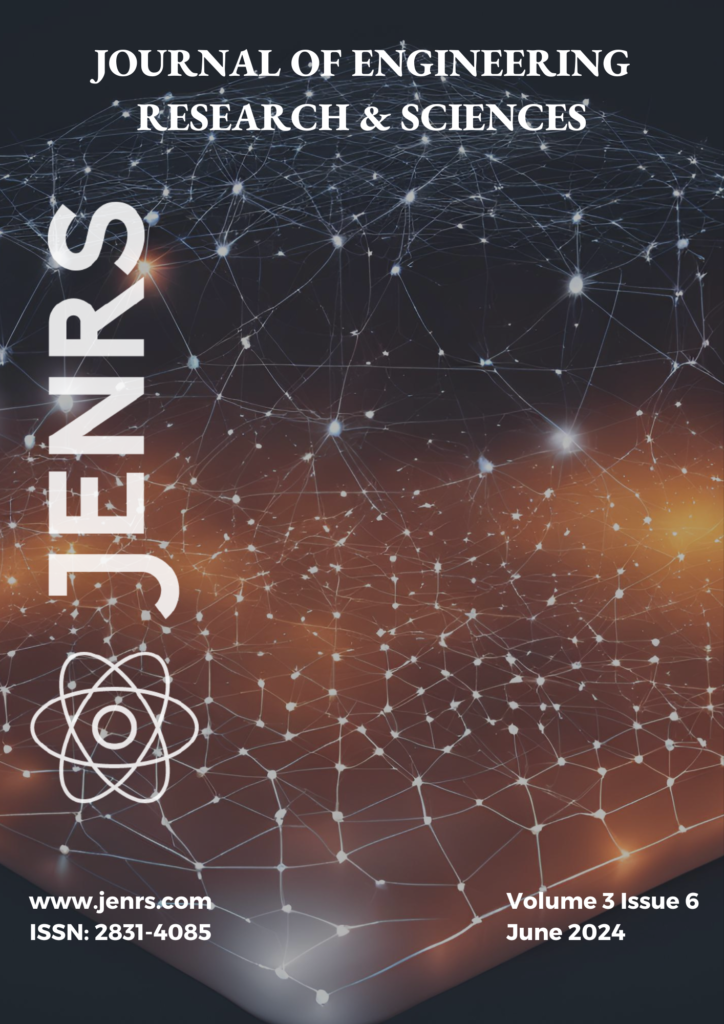
Volume 3, Issue 6
Download Complete Issue
This issue explores four significant research papers addressing key challenges in renewable energy, electrical safety, network education, and vehicular networks. The first study improves wind power forecasting for Senegal’s Taïba Ndiaye wind farm using machine learning. The second paper proposes a safer microwave-based water heating method to prevent electrocution risks in bathing appliances. The third study evaluates network simulation tools for educational purposes, comparing their effectiveness in teaching computer networks. The fourth paper introduces a new simulation tool for Vehicular Ad-hoc Networks (VANETs), focusing on energy efficiency in vehicle-to-vehicle and vehicle-to-infrastructure communications. These diverse works demonstrate the importance of interdisciplinary research in solving complex technological challenges, offering innovative solutions that enhance safety, efficiency, and sustainability in our increasingly connected world.
Front Cover
Publication Month: June 2024, Page(s): i – i
Editorial Board
Publication Month: June 2024, Page(s): ii – ii
Editorial
Publication Month: June 2024, Page(s): iii – iv
Table of Contents
Publication Month: June 2024, Page(s): v – v
Using Artificial Intelligence Models to Predict the Wind Power to be fed into the Grid
Sambalaye Diop, Papa Silly Traore, Mamadou Lamine Ndiaye, Issa Zerbo
J. Engg. Res. & Sci. 3(6), 1-9 (2024);
The Taïba Ndiaye wind farm, connected to the SENELEC grid, plays a key role in offsetting shortfalls in electricity consumption, with an installed capacity of 158.7 MW. Moreover, as an intermittent power station, its production is highly dependent on the environmental conditions in the region. Bad weather can disrupt the electricity network, requiring forecasting methods to anticipate its production. This will make it easier to decide how much fossil energy to bring on stream to meet demand. The aim of this paper is to provide forecasts of wind generation at Taïba Ndiaye, subdividing the data into 80% for model training and 20% to assess its robustness to generalization to other situations. The aim is to quantify the energy produced and facilitate an optimal transition between intermittent and fossil energy sources. Two artificial intelligence models classified as machine learning (decision tree and random forest) are proposed in the study, with respective coefficients of determination of 0.92 and 0.938. The results, compared with the literature, demonstrate the reliability of the approach using only production data. These results promise significant benefits in terms of resource management.
Microwave and Microcontroller Technology to Achieve Warm Water Bathing
Prashobh Karunakaran , Mohammad Shahril Osman , Badrul Hisham Hossain
J. Engg. Res. & Sci. 3(6), 10-17 (2024);
Using electricity to heat up water was among the first uses of electricity by Thomas Edison and the electric kettle has become ubiquitous. But the possible electrocution of humans is low in the above but not so in the bathing water heater where the heating element through which up to 3.6 kW of electricity flows is covered with a copper tube upon which water flows over to get heated up. Even if there is a pin hole in the copper tube, water will enter it and be exposed to the full power and this electrically conductive water later flows to the human taking bath causing fatalities. The good brand of bathing water heaters takes care of safety by using as pure as possible copper which is in the same column as gold and silver in the periodic table where they share the property being more immune to corrosion. In this research and built up, a microcontroller controls the flow of water into a glass container placed within a microwave oven to get heated up. And this water later flows out to enable the human to bathe. This way, there is no possibility of electrocution of humans.
Educational Applications and Comparative Analysis of Network Simulators: Protocols, Types, and Performance Evaluation
Nikolaos V. Oikonomou , Dimitrios V . Oikonomou
J. Engg. Res. & Sci. 3(6), 18-32 (2024);
This work explores the role of simulation in computer networks, discussing various network types, communication protocols, and the utilization of network simulators, with a focus on educational settings. We specifically analyze and compare five prominent network simulators: Cisco Packet Tracer, Riverbed Modeler Academic Edition, GNS3, NS-3, and Mininet. These tools are examined in terms of their functionality, user-friendliness, and suitability for educational purposes, assessing how they facilitate learning for students and trainees. The comparison extends to their operational capabilities, differences, effectiveness, and overall impact on networking education. The evaluation aims to highlight each simulator’s strengths and weaknesses, providing insights into their practical applications in an academic context.
SimulatorBridger: System for Monitoring Energy Efficiency of Electric Vehicles in Real-World Traffic Simulations
Reham Almutairi , Giacomo Bergami, Graham Morgan
J. Engg. Res. & Sci. 3(6), 33-40 (2024);
The increasing popularity and attention in Vehicular Ad-hoc Networks (VANETs) have prompted researchers to develop accurate and realistic simulation tools. Realistic simulation for VANETs is challenging due to the high mobility of vehicles and the need to integrate various communication modalities such as Vehicle-to-Infrastructure (V2I) and Vehicle-to-Vehicle (V2V) interactions. Existing simulators lack the capability to simulate VANET environments based on IoT infrastructure. In this work, we propose Simulator Bridger, a novel simulator that bridges IoTSim-OsmosisRES with SUMO, a traffic simulator, to simulate VANET environments with integrated IoT infrastructure. Our study focuses on analyzing the generated dataflows from V2I and V2V interactions and their impact on vehicle energy efficiency. Even though On-Board Units (OBUs) appear to have insignificant energy demands compared to other vehicle energy consumptions such as electric motors or auxiliary systems (HVAC, lights, comfort facilities), we found a near-perfect correlation between the intensity of communication dataflows and the battery consumption. This correlation indicates that increased communication activity can contribute to an increase in overall energy consumption. Furthermore, we propose future research directions, including traffic rerouting based on battery consumption optimization, which can be efficiently tested using our simulation platform. By including communication energy costs in the design of energy-efficient vehicular networks, these insights contribute to a deeper understanding of energy management in VANETs

